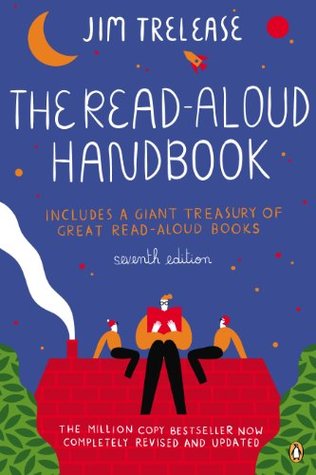More on this book
Community
Kindle Notes & Highlights
Background knowledge is one reason children who read the most bring the largest amount of information to the learning table and thus understand more of what the teacher or the textbook is teaching.
The one prekindergarten skill that matters above all others, because it is the prime predictor of school success or failure, is the child’s vocabulary upon entering school.
It’s not the toys in the house that make the difference in children’s lives; it’s the words in their heads.
The least expensive thing we can give a child outside of a hug turns out to be the most valuable: words.
Researchers found it makes a huge difference in how much conversation takes place between parent and child
The eventual strength of our vocabulary is determined not by the ten thousand common words but by how many rare words we understand.
Whereas an adult uses only nine rare words per thousand when talking with a three-year-old, there are three times as many in a children’s book and more than seven times as many in a newspaper.
“It’s that simple. It’s the most important thing a parent can do with their children.”
(www.trelease-on-reading.com/erinlist.html).
The reason is twofold: (1) Since children in the early grades are reading only the words most of them already know (“decodable text”), neither the slow nor the advanced child is meeting many new words in class; and (2) therefore the students’ only exposure to new or advanced language would have to be from parents,
peers, and teachers. While there’s a shortage of new words in school, at home the advantaged child is more likely to be read to from advanced books, to be exposed to educational television, and to be engaged in meaningful conversation for longer periods of time. The child with the smaller vocabulary ends up hearing the same routine words at home.
desirability of reading to each of your children separately, if possible.
in that seven-day week there must be time for your child to discover the specialness of you, one-on-one, even if it’s only once or twice a week.
book basket
Put another book basket on or near the kitchen table.
The third B is bed lamp: Does your child have a bed lamp or reading light? If not, and you wish to raise a reader, the
Isn’t that why we’re sending him to school, so he’ll learn how to read by himself?” There are many mistaken assumptions in that question.
According to experts, it is a reasonable assertion that reading and listening skills begin to converge at about eighth grade.
Until then, kids usually listen on a higher level than they read on. Therefore,
Grammar is more caught than taught, and the way you catch it is the same way you catch the flu: You’re exposed to it.
The highest-scoring student writers were not those who wrote the most each day, but rather
retained in our memory bank are thirty times greater if we see it instead of just hear it.
Additionally, recent brain science tells us fiction engages a larger portion of the brain.
Few children learn to love books by themselves. Someone has to lure them into the wonderful world of the written word; someone has to show them the way.
The Scientist in the Crib: Minds, Brains, and How Children Learn by Gopnik, Meltzoff, and Kuhl and The Myth of the First Three Years by John T. Bruer.
offers a half dozen short videos online, ranging
Mother Goose and Dr. Seuss
and popular children’s books like Seuss’s The Foot Book and Mem Fox’s Ten Little Fingers and Ten Little Toes,
The Neighborhood Mother Goose by Nina Crews and Tomie dePaola’s Mother Goose. If
The Neighborhood Sing-Along,
“gosling” series,
Gossie
“Play Ping-Pong,
not darts.”
responses. Two books are excellent for this purpose: The Everything Book by Denise Fleming and First 100 Words by Roger Priddy.
The very best picture book at this stage may be the one you make, using photographs taken in your home and of your family. Desktop printing has made this kind of publishing easy for families.
Prior to age two, repeated readings of fewer books are better than a huge collection read infrequently.
Extraneous questions can be handled by saying, “Good question! Let’s come back to that when we’re done.”
Corduroy
In other words, the more interesting the book, the keener the child’s attention
Discussion after the story is of critical importance, but it doesn’t have to last forever.
The Biggest Bear
The Island of the Skog by
Snip Snap!...
This highlight has been truncated due to consecutive passage length restrictions.
of Rumpelstiltskin.
Then I’d do a week of picture books from the Treasury at the back of this book, including Chewie Louie by Howie Schneider (humor), The Secret Shortcut by Mark Teague (excuses), I Am So Strong by Mario Ramos (boasting versus humility), The Great Fuzz Frenzy by Janet Stevens and Susan Stevens Crummel (copycatting), and Lost and Found: Three Dog Stories by Jim La-Marche (determination), with each very short story read at a different hour of the day, stretching the one book through the day.
I’d start with Kevin Henkes, who uses
I’d have a Bill Peet Week, choosing a week’s worth of reading listed with The Whingdingdilly in the Treasury. On the day I read Kermit the Hermit (about
I’d introduce it with “Hector the Collector” from Shel Silverstein’s poetry collection Where the Sidewalk Ends. From then on I would sprinkle poetry throughout the day: waiting
book—like Bernard Waber’s seven-book Lyle the Crocodile series, which begins with The House on East 88th Street. (See its Treasury listing for


